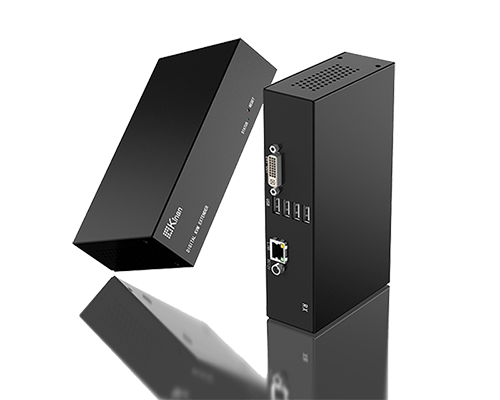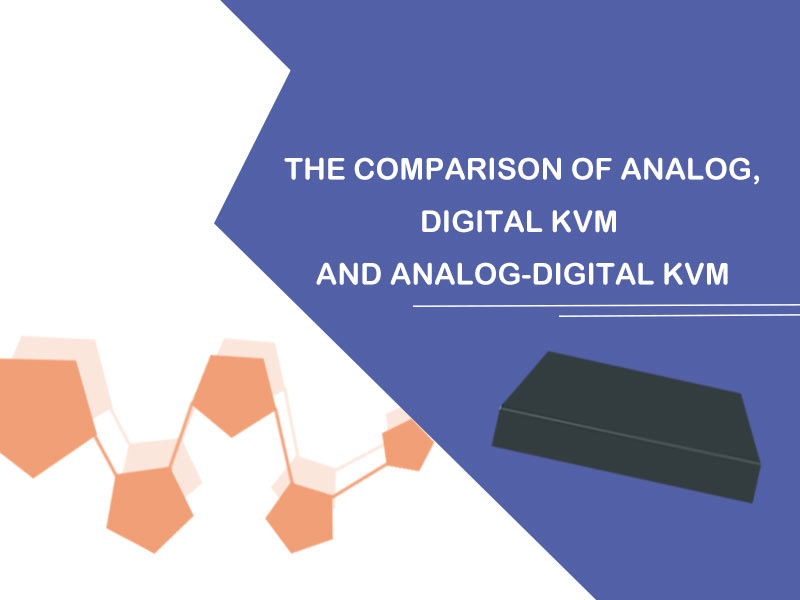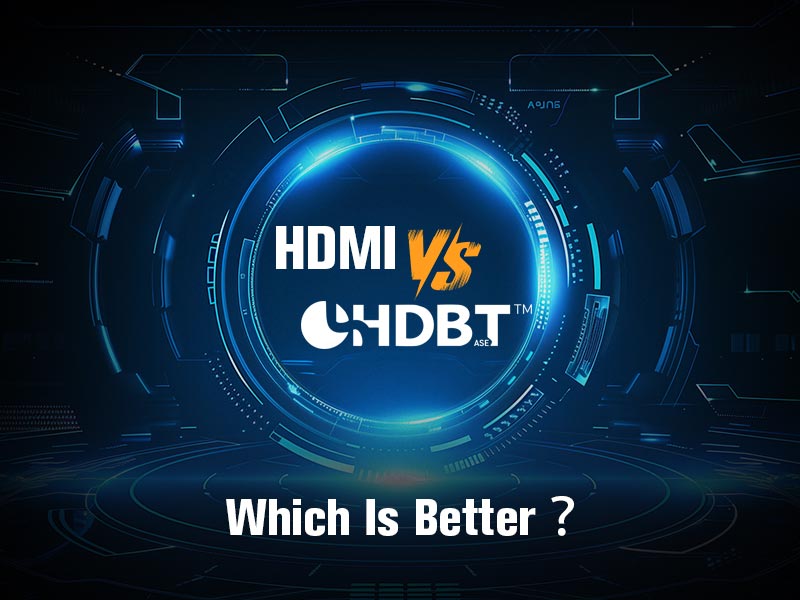As a management device, KVM means a set of keyboard, video and mouse. It can be used to control multiple devices. Nowadays, there are two types of KVM products: Analog and digital products. The main difference between these two products is that analog KVM transmits analog signals, but digital KVM transmits digital signals via TCP/IP protocol. Therefore, there are three KVM solutions: analog KVM, digital KVM and analog-digital hybrid KVM.
The advantages of analog KVM
- Don’t occupy network resources.
- Don’t be affected by the interruption of IP network.
- Provide videos with true color, high resolution (1920 X 1024).
- Without latency.
- Great scalability.
- High security.
- Simple installation and debugging.
- Hot-plugging.
- Mature product.
- Competitive price.
However, the transmission distance of analog signals is limited. Once the distance is over 300m, the signal will be interrupted.
The advantages of digital KVM
- All users have remote access to computers via IP network without the distance limitation.
- It is easy to scaling.

The Disadvantages of digital KVM
- The videos of all users are easily affected by network.
- Each device must occupy an IP address.
- Always face the security risks of IP networks.
- With latency.
- Lower resolution.
Choosing digital and analog KVM depends on the requirements of clients. The main point is that the function of remote management based on TCP/IP is needed. Digital KVM takes advantage of the network, but it also brings disadvantages such as poor security, inability to work in real time, and low resolution.
In general, the advantages of analog KVM are more than that of digital devices. However, compared with analog KVM, the latter one is outstanding for its remote access. Certainly, if remote access is necessary, the number of users should be considered as well.
The fact is that most maintainers are required to work in server rooms because some enterprises don’t allow users to control servers out of server rooms remotely. If only 2 remote users are needed, it isn’t good to choose a pure digital solution because the risk of this solution is high. At this time, the best solution is analog-digital hybrid KVM.
What is an analog-digital hybrid KVM solution?
This solution is to connect dedicated internet devices to the end of the analog KVM system. And the provided IP access interface can satisfy the requirements of remote access for users.
The advantages of analog-digital KVM
- The bandwidth usage of remote access users can be customized based on the user’s network conditions.
- Only the remote users will be affected if the Internet is interrupted.
- The internal Modems of some IP products allow uninterrupted remote access although the Internet is interrupted.
- Use a unique TCP/IP communication port and can be set arbitrarily according to the mechanism of the user’s firewall.
- Rarely occupy IP address resources.
- No need to set up a dedicated authentication server.
Conclusion
From the above comparison of three types of KVM systems, it is easy to find that the analog KVM is the premium choice if the remote access isn’t required. However, if the servers are scattered all over the world, and the users are also from different places, the digital KVM should be the best solution to achieve centralized management of the servers. If you need to reserve an interface for remote access, you can select analog-digital KVM because it can provide higher cost performance.



